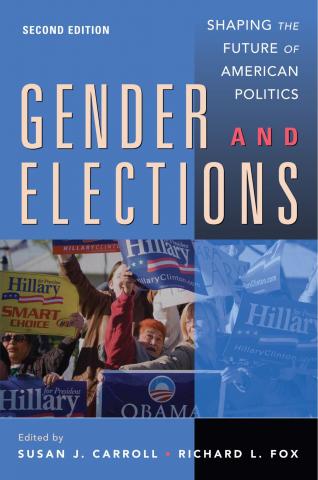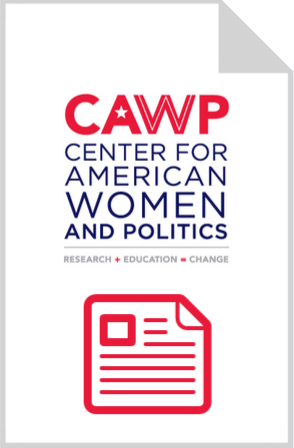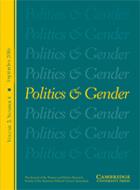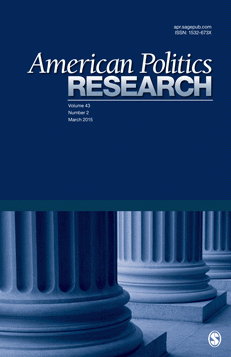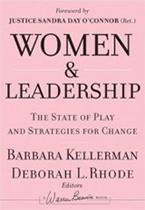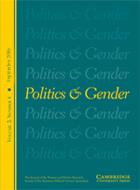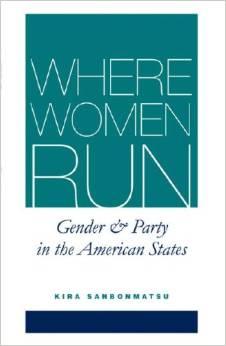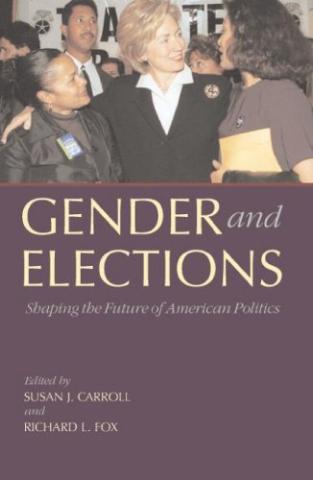Gender and Elections: Shaping the Future of American Politics, 2nd Edition
Eds. Susan J. Carroll, CAWP, Rutgers University and Richard L. Fox, Union College, New York
Cambridge University Press, 2009 Second Edition, 314 pagesBookResearchCAWP ScholarPolitical PartiesCandidates and CampaignsGender and Race/EthnicityWomen Voters and the Gender GapState LegislatureStatewide ExecutiveCongressFederal ExecutiveGender and Election to the State Legislatures: Then and Now
by Susan J. Carroll and Kira Sanbonmatsu
Paper presented at the Ninth Annual State Politics and Policy Conference, 2009Conference PaperResearchCAWP ScholarCandidates and CampaignsCandidate RecruitmentState LegislatureGender and the Decision to Run for the State Legislature
by Susan J. Carroll and Kira Sanbonmatsu
Paper presented at the 2009 Midwest Political Science Association annual meetingConference PaperResearchCAWP ScholarCandidates and CampaignsCandidate RecruitmentState Legislature“Reflections on Gender and Hillary Clinton’s Presidential Campaign: The Good, the Bad, and the Misogynic
by Susan J. Carroll
Politics & Gender 2009, Volume 5 (March)ArticleResearchCAWP ScholarCandidates and CampaignsFederal ExecutiveGender Backlash in American Politics?
by Kira Sanbonmatsu
Politics and Gender (September 2006)ArticleResearchCAWP ScholarPolitical PartiesCandidates and CampaignsState LegislatureGender Stereotypes and Attitudes Toward Gender Balance in Government
by Kathleen Dolan and Kira Sanbonmatsu
American Politics Research, August 2008ArticleResearchCAWP ScholarCandidates and CampaignsWomen Voters and the Gender GapCongressShe's the Candidate! A Woman for President
by Ruth B. Mandel
Book chapter in Women and Leadership: The State of Play and Strategies for Change, Eds. Barbara Kellerman and Deborah L. Rhode
Jossey-Bass J-B Warren Bennis Series, 2007Book ChapterResearchCAWP ScholarCandidates and CampaignsFederal ExecutiveDo Parties Know that ‘Women Win’? Party Leader Beliefs about Women’s Electoral Chances
by Kira Sanbonmatsu
Politics & Gender 2006 (December)ArticleResearchCAWP ScholarPolitical PartiesCandidates and CampaignsWhere Women Run: Gender and Party in the American States
by Kira Sanbonmatsu
University of Michigan Press, 2006, 264 pagesBookResearchCAWP ScholarPolitical PartiesCandidates and CampaignsCandidate RecruitmentState Elections: Where Do Women Run? Where Do Women Win?
by Kira Sanbonmatsu
Chapter in Gender and Elections: Shaping the Future of American Politics, 1st Edition, Eds. Susan J. Carroll, CAWP, Rutgers University and Richard L. Fox, Union College, New York
Cambridge University Press, 2005 First Edition, 240 pagesBook ChapterResearchCAWP ScholarCandidates and Campaigns


